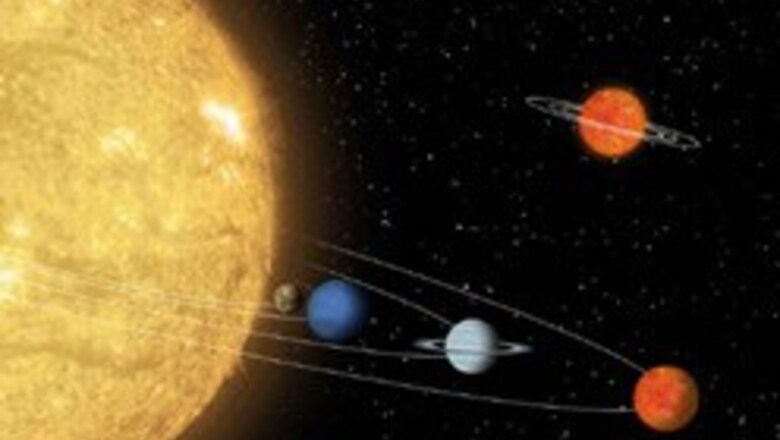
views
Washington: Researchers claim to have discovered a new solar system that could host Earthlike planets.
Scientists from the University of Colorado, were running a computer simulations of four nearby solar systems that contained giant planets the size of Jupiter, the largest in our solar system.
They claim to have found an Earthlike planet that supposedly has the right conditions essential for supporting life.
The second solar system is likely to have a belt of rocky bodies the size of Mars or smaller, they said.
The other two do not have the proper conditions to form an Earth-size planet.
Experts said that each system lay within 250 light years of Earth.
Astronomers further said they had already found evidence that each system contained at least two giant planets the size of Jupiter, which had migrated close to their stars, perhaps as close as Mercury was to the Sun.
Sean Raymond from the University of Colorado said that for each of the four systems, they conducted 10 computerised simulations.
They placed small planet embryos in the system to see if they were able to gather more material and form a true planet the size of Earth.
Each simulation assumed the same conditions in the planetary system except that the position and mass of each protoplanet was altered slightly, he said in the research published in the June issue of the Astrophysical Journal.
"It's exciting that our models show a habitable planet, a planet with mass, temperature and water content similar to Earth's, could have formed in one of the first extrasolar multi-planet systems detected," said Rory Barnes, the co-author of the study.
Raymond said that even surprising was the fact that only systems that formed planets the size of Mars or smaller were stable.
Earlier studies had shown that many known extrasolar planetary had regions stable enough to support planets ranging from the mass of Earth to that of Saturn.
"What surprised me the most was to see the system that only formed planets the size of Mars or smaller. Anything that grew too big would be unstable, so there was an accumulation of a lot of smaller protoplanets maybe one-tenth the size of Earth," he said.
“It was significant, that the models showed conditions could remain stable enough for 100 million years so that a planetary embryo would have a chance to gather more substance and develop into a body the size of the moon or Mars," said Nathan Kaib, from the University of Washington.
"In our early system, that's probably what our inner solar system looked like, with hundreds of bodies that size," he added.



















Comments
0 comment